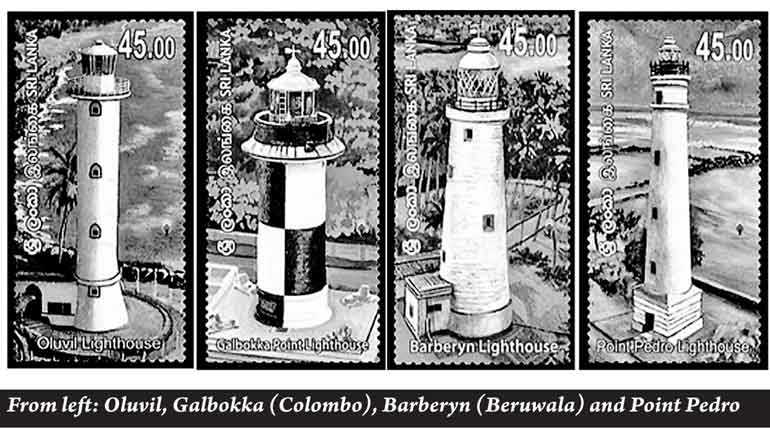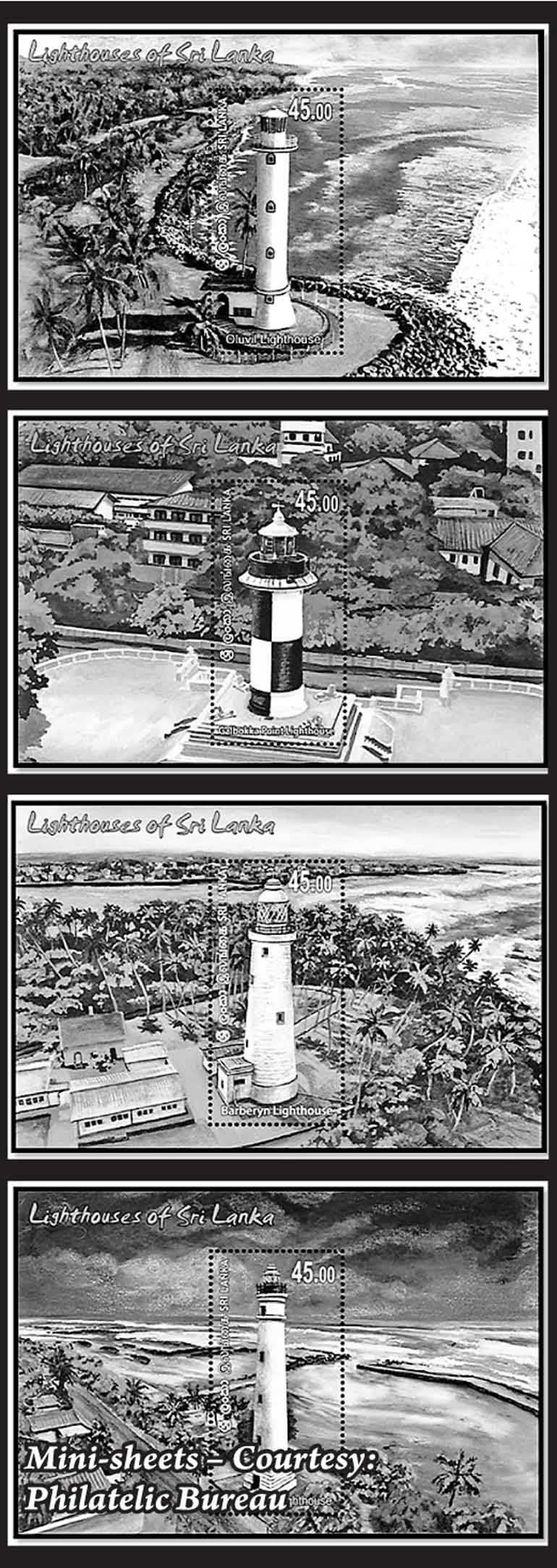Sunday Dec 28, 2025
Sunday Dec 28, 2025
Saturday, 8 December 2018 00:00 - - {{hitsCtrl.values.hits}}

By D.C. Ranatunga
If one is to ask what the most significant landmark in Colombo Fort dating back to over a century, many would unhesitatingly say it’s the Clock Tower. True, skyscrapers have come up in recent years but they were unknown in the early British era dating back to the 19th century. The clock tower, in fact, is 161 years old since its construction.
It was built where Chatham Street starts and intersects Queen’s Street (presently Janadhipathi Mawatha). In the early part of the 20th century, most – if not all – iconic buildings around the clock tower apart from Queen’s House and General Post Office (GPO), were commercial buildings, mainly those housing foreign banks. On one side was the Chartered Bank and on the other, the Mercantile Bank. Then there was the National Mutual Building, the head office of the insurance company National Mutual Life Association of Australasia Ltd. (Today the building houses the Central Bank currency museum.)
Though the building was erected in 1857, it had been mooted 42 years earlier in 1815. Designed by Lady Ward, wife of Governor Sir Henry Ward (1855-60), the clock was obtained in 1872, kept in a warehouse until finally installing it in 1914. The four dials are created according to a standard British design showing time to all four points of the compass.
What most of us fail to remember is that the clock tower was also the first Lighthouse in Colombo. Thus it provided two services – one providing accurate time and the other serving as a guiding light to the ships. At 132 feet above sea level, it had a white revolving double light which showed a triple flash lasting a second with an 18-second wait. Powered by kerosene oil the light could be seen from a distance of 18km away in clear weather.
Writer Virginia Woolf, wife of the Leonard Woolf, well-known British civil servant who served in Ceylon, introduces the lighthouse as “a silvery, misty-looking tower with a yellow eye, that opened suddenly and softly in the evening,” in her book ‘To the Lighthouse’.
What a lighthouse is all about is explained in a recent Stamp Bulletin of the Philatelic Bureau thus: “Lighthouses are guiding lights that have stood for more than a thousand years. Even as waves batter their sides, lighthouses stand proud and erect, guiding the way for all storm-tossed mariners. They are used to indicate dangerous coastlines, underwater rocks and shoals and to guide ships through the channels safely in and out of harbours. The earliest lighthouses were beacon fires or candles displayed through windows of buildings. With the advancement of technology more advanced methods were used to beam the flash from lighthouses such parabolic reflectors and Fresnel lens invented in the nineteenth century by the French Civil Engineer Augustin – Jean Fresnel. To light the fires during the earliest times various types of oil were used and by the 1900s oil gave away to gas, electricity and more recently to solar power.”

In what are known as “man-made wonders,” until recently lighthouses were manned by lighthouse-keepers. It was no easy job. They had to undergo tremendous difficulties in performing their duties day and night to ensure the safety of sea-going vessels and mariners. They would trim wicks, top up oil, keep the lenses clean, and operate the various mechanisms.
The turn of the 20th century saw most lighthouses being automated.
These amazing feats of engineering built on the stormiest coastlines have stood for centuries and saved millions of lives in the era before modern navigation. Many of them still do.
In Sri Lanka
Being an island, lighthouses have been an essential element in Sri Lanka’s maritime activities from earliest times. Even the December 2014 tsunami which devastated the Sri Lankan coast failed to destroy any of the lighthouses, though some were slightly damaged.In Sri Lanka most of the lighthouses which were built during the British rule were operated and maintained by the Imperial Lighthouse Service. After independence in 1948 the Sri Lanka Navy gradually took over their operation which was completed by 1976. Today, of the 16 active lighthouses (there were 25 in all), most are under the control of the Sri Lanka Ports Authority. The others are controlled by the Navy. There are four international lighthouses in Sri Lanka – Dondra Head, Little Basses Reef, Great Basses Reef and Barberyn (Beruwala).
Four lighthouses are featured in the recent issue of stamps.
Oluvil Lighthouse, the first lighthouse built in 1999 by Sri Lankan authorities along with the commissioning of the Oluvil fisheries harbour, is situated on the eastern coast 12 km from the town of Kalmunai. Its focal height is 25 metres (82 feet). The white light flashes every 10 seconds. The white cylindrical tower suffered minor damage from the 2004 tsunami, but has since been repaired. It is also open to the public.Galbokka Point Lighthouse, situated on the western coast on the approach road to the Colombo Harbour, was built in 1952 after the decommissioning of the nearby Colombo Clock Tower lighthouse. The focal height of the round concrete tower lighthouse is 26 metres (85 feet). The white light flashes every 10 seconds. The light beam is visible up to 25 nautical miles. The front of the lighthouse is painted black and white. The lighthouse is open to the public.
Barberyn Lighthouse (1890), situated in an island named Barberyn on the south-western coast near the town of Beruwala, can only be reached by boat. The focal height of the round stone-embossed tower painted white lighthouse is 46 metres (151 feet). The white light flashes every 20 seconds and is visible up to 27 nautical miles. The glass of the tower is still the original glass installed by the British when the lighthouse was built. It is open to the public.Point Pedro Lighthouse (1916) is in close proximity to the town of Point Pedro in the northern-most point of Sri Lanka. The focal height of the tower is 31 metres (102 feet) and it flashed a white light every five seconds when it was active. The flash could be seen up to 10 nautical miles. It is a round concrete tower painted in white. Controlled by the Sri Lanka Navy, the lighthouse and tower is presently not opened to the public, even though the surrounding area is inhabited by people.
